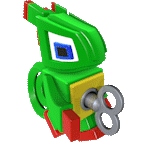Like it or not, your game is going to need graphics, otherwise it's just not going to be very fun. If you can't draw, then you're probably going to want to get a friend who can, and if that's not a possibility, then you'll just have to do it the hard way and learn yourself. Here are some resources for the aspiring artists:
https://www.dropbox.... Brain.pdf?dl=0
The absolute first step for drawing is learning how to copy. Apply yourself to the exercises for a month and you're sure to improve. Get used to drawing objects from life after going through the book, doesn't matter what they are. Once you feel comfortable with your routine (in other words, once drawing doesn't feel like a daunting task anymore), then you can start adding a new skill to your repertoire:
https://www.dropbox....Pencil.pdf?dl=0
This is where you learn the basics of drawing from imagination, or construction, whatever you want to call it. It doesn't matter, the only thing that matters is, once again, that you apply yourself to the exercises in the book. Lucky for you, this book is low threshold because of its target audience, so it'll be very easy to follow along with the author. Just relax and have some fun with it, there's no need to rush. That's sound advice for pretty much every time you sit down to draw, by the way; It's very easy to motivate yourself to draw when you love every second of it.
So hopefully you're getting the gist of things by the time you've finished reading those two books, but you're still missing one more fundamental skill: Perspective.
https://www.dropbox....e Easy.pdf?dl=0
This is when things start getting a little technical, but don't worry, you'll be able to keep up. It'll be of utmost importance if you want your buildings to look like buildings in your games! or if you ever come across... foreshortening. My sworn enemy. Someone I shall make you vow to me.
After you're done with all three books, you'll want to regularly practice all three skills you learned with them (at this point you want to analyze objects from life instead of just copying them, though. Break them into simple forms, think about why light behaves the way it does, etc.), as well as study more advanced books on the subject. You could move into reading Figure Drawing for All It's Worth from here. Maybe dabble in more advanced perspective. The order in which you study doesn't actually matter all that much, what's important is that you keep challenging yourself. If you struggle a lot with something and hate it, then focus on that until you get good at it and enjoy it. Then move on to focusing on another thing you struggle with.
Once you have a pretty solid grasp on anatomy and perspective, you may want to start looking into animation.
https://www.dropbox....al Kit.pdf?dl=0
I hear this is a good book on animation, but I haven't read it or anything related to animation.


























